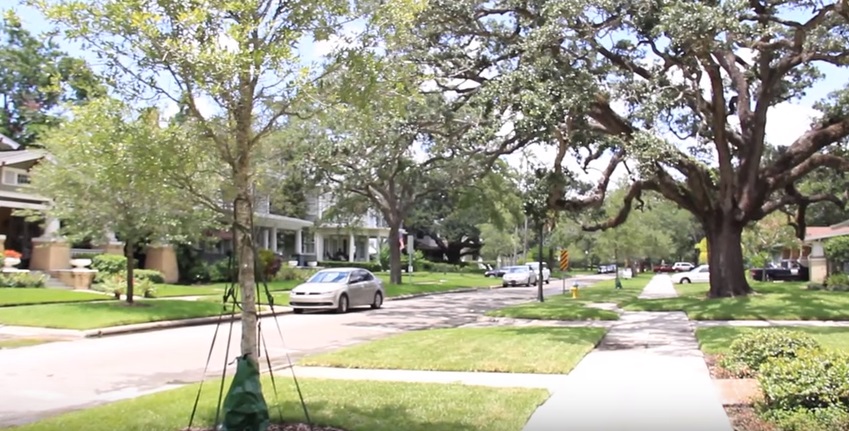
A Tampa, Florida neighborhood worked together to replace street trees lost to damage because they understood the many values the trees provided. Credit. Priya Jaishanker
In warmer regions, many people are willing to pay higher prices for homes that contain trees in their yards. They recognize that trees offer numerous benefits, including providing much-needed shade during the summer and increasing air quality. Homeowners have made it clear how much they appreciate the benefits of urban trees; in areas where older trees have begun to need removal, residents have gathered donations to the city to help cover the costs of replanting with new trees. To these residents, trees provide a sense of place in which one can live in comfort and safety.
There are some costs and risks of urban forests. Although the probability of tree blowovers during storms and hurricanes have been exaggerated by the media, these risks are still present. A more consistent factor to keep in mind is the cost of maintaining trees in urban areas. Trees require regular watering and care, and many homeowners, especially those in less affluent areas, do not have the time or money to provide the required level of maintenance or to have the trees removed when they begin to decline in health. Urban forestry initiatives are working to help communities understand that through sound, scientifically guided management strategies, the benefits of urban forests can outweigh the costs.
Watch Community involvement with Urban Forestry to learn more. This video is part of a series, Trees for Energy Conservation, developed by the Southern Regional Extension Forestry and Virginia Tech Cooperative Extension with funding provided by a National Urban and Community Forestry Advisory Council grant.
Written by: Connor McDonald, Southern Regional Extension Forestry
